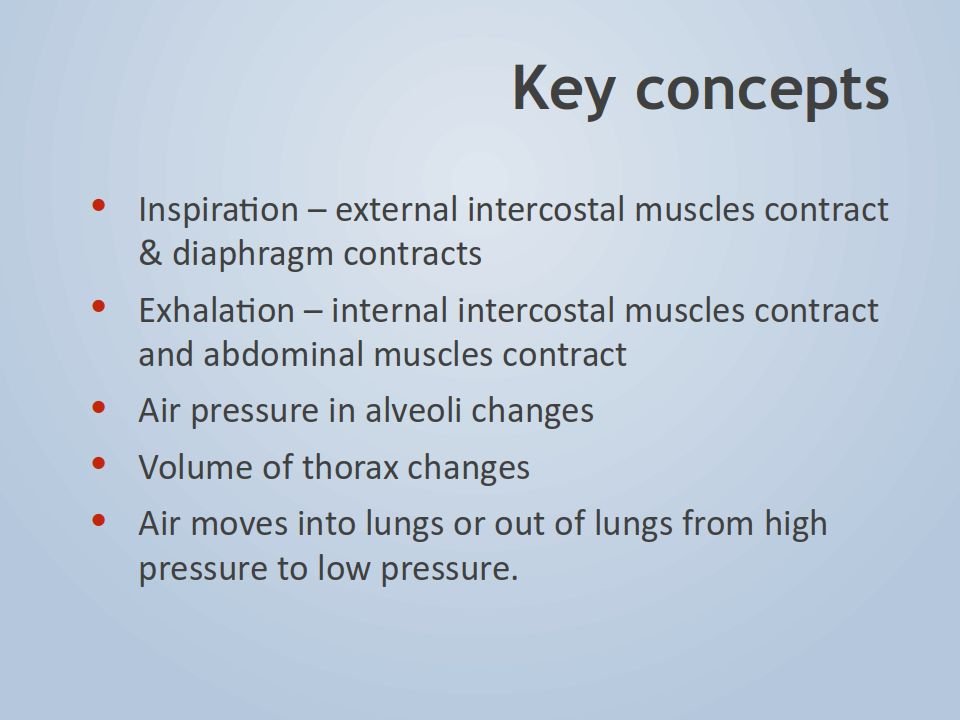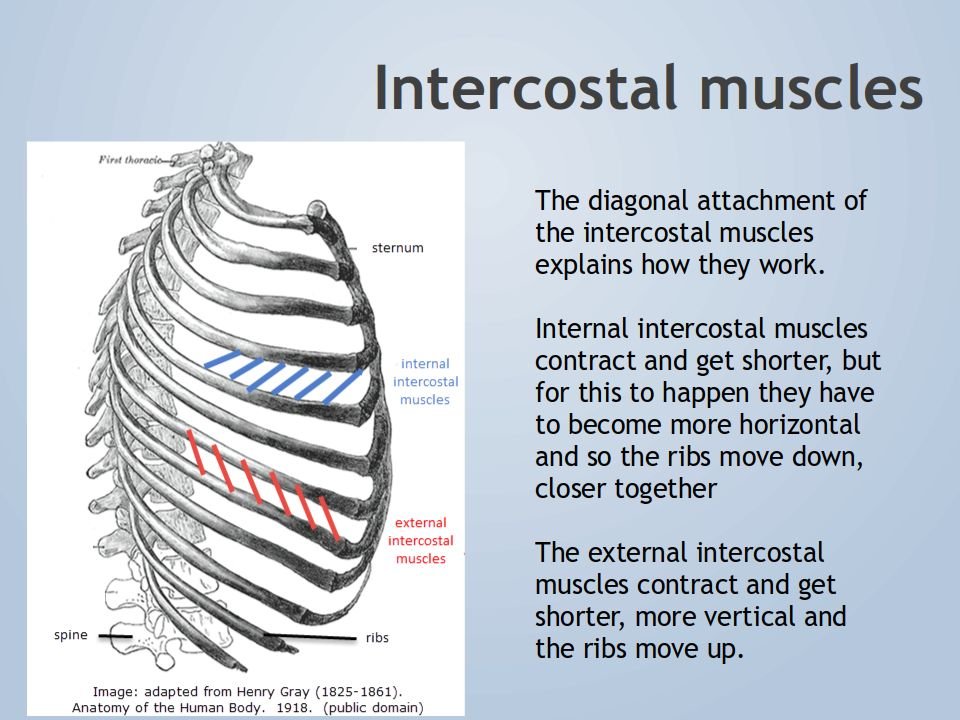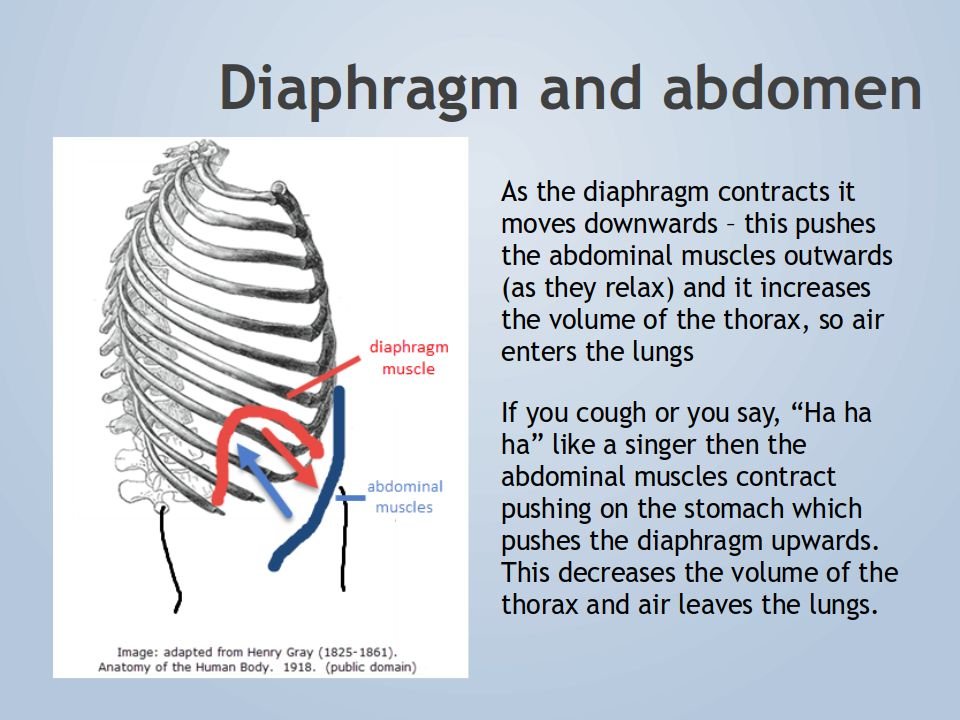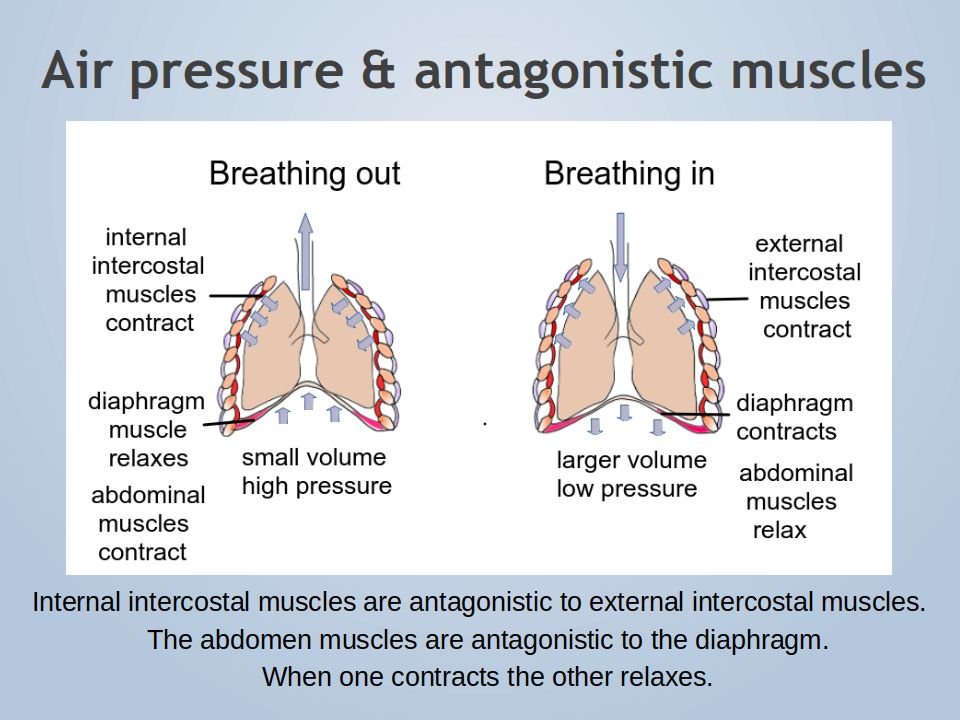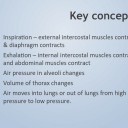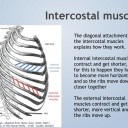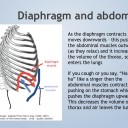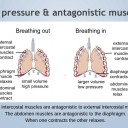Ventilation & lung disease
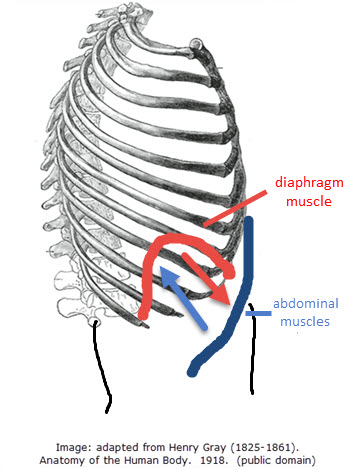 Students begin by looking at the muscle contractions which cause the pressure changes inside the thorax that force air in and out of the lungs to ventilate them. This is followed by an experiment to monitor breathing rates (Practical 6) and there is an activity to help prepare students for their IA investigation. Two short videos about lung disease conclude the activities. Students are asked to make links between lung structure and the consequences of these diseases.
Students begin by looking at the muscle contractions which cause the pressure changes inside the thorax that force air in and out of the lungs to ventilate them. This is followed by an experiment to monitor breathing rates (Practical 6) and there is an activity to help prepare students for their IA investigation. Two short videos about lung disease conclude the activities. Students are asked to make links between lung structure and the consequences of these diseases.
Lesson Description
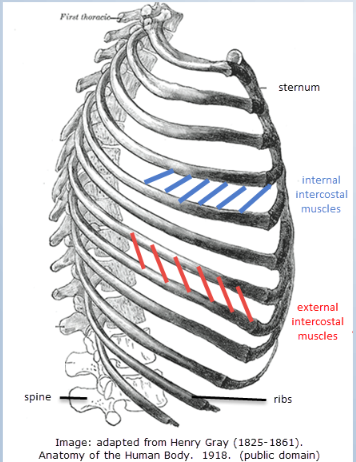 Guiding Questions
Guiding Questions
Which muscles cause us to breath in?
What is different about the arrangement of the blue internal intercostal muscles and the red external intercostal muscles?
How does this change the movement of the ribs when each muscle contracts?
Activity 1 - Antagonistic muscles and ventilation of the lungs
First watch the short video ![]() Respiration muscle animation showing the role of intercostal muscles and the diaphragm in breathing.
Respiration muscle animation showing the role of intercostal muscles and the diaphragm in breathing.
Then look at these slides to summarise the main points. Make notes of the key points.
Activity 2 - Experiment to measure breathing rate after exercise
IA investigations require students to think of a research question to try to answer. They research some background biology before designing a method to collect data and test their research question.
This experiment tries to illustrate the planning process.
The worksheet is written as though it was a student plan for an IA Investigation.
A good training for IA would be to get students to mark the plan below using the IA Investigation - marking sheet
Measuring ventilation rates is also Practical 6, one of the seven prescribed labs.
Read carefully the ![]() Measuring breathing rate experiment worksheet then carry out the experiment.
Measuring breathing rate experiment worksheet then carry out the experiment.
Once the data has been collected then try to analyse the data and write a conclusion and evaluation. This will be good practice for the IA investigation.
Click here for a simple online metronome which will help to pace steps during the experiments.
Activity 3 - Causes and consequences of lung diseases
Watch the two videos below about emphysema and lung cancer.
Produce a leaflet which explains both the structures of the lungs and the problems which the two diseases cause to specific cells within the lungs.
This animated explanation of emphysema is a bit too detailed for IB but worth watching. | This video discusses the growth of cancer cells during lung cancer. Again, more detail that required but interesting to see. |
Try these IB style questions about the effects of emphysema and lung cancer on the function of the lungs. These questions are examples of applications of biological knowledge to explain unfamiliar situations. Here a knowledge or the normal functioning of alveoli and lungs can be used to predict the effects of emphysema and lung cancer.
![]() IB style querstions on lung diseases
IB style querstions on lung diseases
Teacher's notes
This lesson includes three activities. There are some questions to get students thinking a little in the Guiding questions at the top of the page. I sometime display this as students arrive so that as we settle down many students begin thinking about an interesting aspect of the topic. In the case of the functioning of the intercostal muscles it is possible to make a simple model showing how that the direction of the diagonal affects whether they cause inspiration or expiration. There are some brief details here: Model intercostal muscles from York University CA.
The first, Activity 1, is a simple description of the mechanism of breathing, and the role of antagonistic pairs of muscles. The short video has been adapted from an old flash animation a,d shows the role of intercostal muscles and the diaphragm as well as the abdominal muscles in breathing. The simple graphs illustrate the changes in pressure, but they will need some explanation.
Activity two is an experiment which could be used as training for the IA investigation. Students are given an illustration of how to plan an experiment, and get an opportunity to analyse the data themselves. This is quite a simple experiment, and perhaps this is a little too simple for a student IA.
The last activity is simply two short videos. It would be good to give student an assessment task based on these videos. Something which links the structure of the lungs with the problems of the two diseases would make a nice activity.

 IB Docs (2) Team
IB Docs (2) Team


